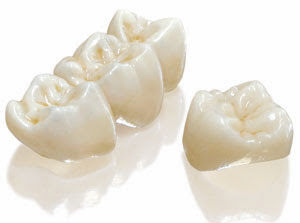 |
| Holiday Treats and Oral Health, a Dentist perspective |
Now that the holidays are upon us, there are likely plenty of foods and drinks that tempt our appetite.
Have you wondered which how these tasty treats affect our oral health?
Let's take a look at a few foods and drinks, and how they affect your teeth and gums:
The good ones:
Sparkling Water - Water is great for your body and teeth and gums alike. It hydrates your body and teeth alike, and also helps wash away plaque and bacteria away from your teeth. As long as the sparkling water does not contain sugar (if it contains flavors, that's okay), Dr. Chien and your dental hygienist at Bellevue Family Dentistry in
Bellevue, WA recommends you drink away!
Chewing Gum (sugar free) - Chewing gum promotes salivary flow, which helps remove bacteria and plaque off the teeth's enamel. Studies have shown that chewing gum is correlated with lower risk of dental decay and cavities.
Sugar free and pure cocoa - Coca has been to have a power positive affect one's cardiovascular health, and it has also shown be
cariostatic (halts development of dental decay). Try mixing cocoa with hot water and a splash of sweet and low for a delicious sugar free drink that is good for your teeth!
The not so good:
Milk - Though milk is good for the development of strong teeth and bones due to its high calcium and Vitamin D content, milk contains lactose, a type of sugar. Infants and toddlers should be kept from drinking milk at night during bed time to prevent baby bottle decay. Otherwise drink milk during the day and be sure to brush your teeth immediately afterwards.
Candy cane - This popular candy is made 100% from sugar and sugar products. It really adheres to the teeth's enamel and promotes plaque buildup, gum disease, and tooth decay.
Cookies and cake - Often loaded with sugars and unhealthy fats, it can be unhealthy for the body and teeth, increasing the risk of cavities. Try to find sugar free and low fat cookies and cake when possible.
Coffee - People sometimes have a tendency to load their coffee with sugars and high fat milk sweeteners. Plus coffee can promote extrinsic tooth stains that may be difficult to remove, even during a
dental cleaning.
Regardless of times though, be sure to always brush and floss your teeth daily to help prevent cavities and gum disease.
If you have any questions about how some of the above foods and drinks can affect your teeth during these holiday times, your
family dentist in Bellevue is here to address your concerns.
Warm Regards,
Dr.
Peter Chien
www.bellevuefamilydentistry.com
(425) 614-1600











